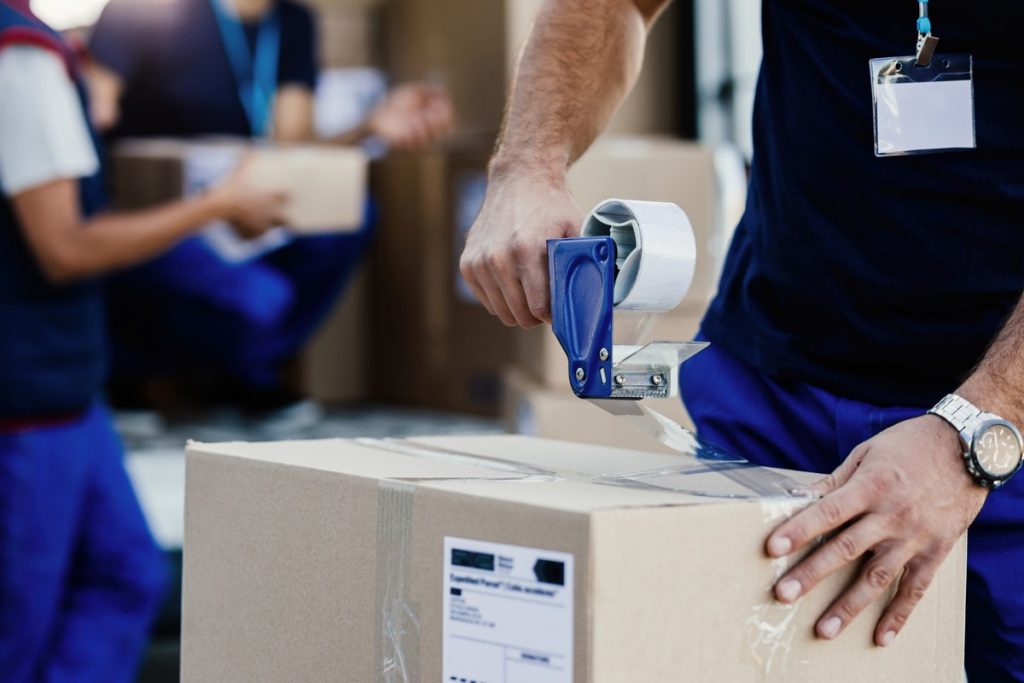Packaging and labeling sometimes need clarification in product marketing. Their duties differ, yet both help launch products. Product labeling is information, while packaging is structure. Packaging seeks protection, portability, and appeal. To attract customers, packaging should reflect the brand and be appealing. Product hazards and guidelines must be included.
Labeling informs customers’ decisions. Legal labels must include product names, ingredients, nutritional information, and warnings. Package labels provide product facts. Packages cover products, while labels contain ingredients and directions. Marketing involves labeling and packaging. Labels inform buyers, while packaging impacts their choice. Product launches can be effective with proper packaging and labeling.
Table of Contents
What Is Packaging?

Creating the ideal package is an art form that entails creating a visually appealing product container and manufacturing it to ensure protection during transportation. Packaging serves not just as protection but may also raise brand awareness by making products visible to store employees while on shelves.
Product packaging includes everything from the material and size of the container to labeling and print design. Packaging materials can vary from cardboard boxes to plastic trays depending on the product being protected. Containers can be printed with labels and other branding information such as logos, colors, font style, and text. These components are carefully chosen to create a product that stands out from the competition.
Many materials are available to protect and secure items in quality packaging while they are being shipped, including but not limited to:
- Bubble wrap
- Shrink-wrap
- Corrugated cardboard box
- Air cushions
- Plastic
- Wood
- Paper
- Metal
- Cellophane
- Cloth
- Styrofoam
- Polythene
What Are the Types of Packaging?
Packaging refers to encasing a product for protection, convenience, and handling. Its three different types are-
- Primary Packaging: This type of packaging is typically a product’s first line of defense. It is directly in contact with the product and keeps it safe from external elements. Primary packaging includes clamshells, shrink wraps, blister packs, and boxes.
- Secondary Packaging: Secondary packaging is the layer of packaging that wraps a group of products together in a single unit. It usually refers to cardboard boxes, heavier plastic wraps, and shrink wrapping. Secondary packaging helps keep related items together for easy transport and display.
- Transportation Packaging: Transportation packaging refers to heavy-duty materials such as pallets and crates used to move goods safely from one place to another. This type of packaging also includes protective covering like bubble wrap, foam, or corrugated board sheets.
Custom packaging is designed to meet your business’s needs. Innovative packaging helps strengthen the brand image, and creative designs can help attract customers’ attention. Quality packaging should not only protect the product but also promote your brand.
What Are the Benefits of Packaging?
- Mitigating contamination: A product packaging material is designed to protect the product from contact with dirt, dust, moisture, and other environmental contaminants. This is especially important for food items or products that external elements can impact.
- Product identification: The packaging provides a surface for labeling to help customers quickly identify the product they want without opening multiple packages.
- Brand reinforcement: Product packaging design can be a powerful marketing tool that reinforces brand identity and communicates critical messages about the product.
- Enhancing shelf appeal: An appropriate package can increase a product’s visibility and create an attractive product presentation.
- Protection during transit: Tertiary packaging protects the products from damage during transit or distribution. This can prevent loss of sales due to damaged or unsellable products.
- Brand and product differentiation: Packaging often helps differentiate one brand and product from another, making it easier for customers to choose the one they want.
- Stopping leakage: Product packaging provides a barrier between the product and outside elements, which helps prevent leakage. This is especially important for products like food and beverages prone to leakage.
- Temperature management: Packaging helps protect your products from extreme heat or cold, ensuring better temperature stability.
What Is Labeling?
Labeling is applying information about a product onto its container or package for identification purposes. This information includes brand names, logos, ingredient lists, expiration dates, and nutritional information. Labeling helps customers make informed purchase decisions and helps manufacturers meet regulatory requirements.
A label prominently showcases information such as:
- Brand Identity
- Name of the Product
- Product Attributes
- Ingredients
- Directions for Use
- Warning Statements
- Regulatory Information
- Product Price
- Barcode
- Quantity
- Inventory Code
- Batch Number
- Expiry Date
- Product Weight
What Are the Types of Labels?
Labels come in a variety of shapes, sizes, and materials. Common label types include:
- Product labels tell you important things about an item, like its material, how to use it, and any safety warnings.
- Barcode labels store information that helps management keep track of stock, set prices, and track items in stores and during shipping. Brand labels show off the brand’s name, symbol, and style. They help people recognize the brand and are usually found on the packaging.
- Nutritional labels provide information about nutrients, such as the number of calories, fat, and vitamins in an item.
- Caution labels warn about risks and give safety tips for a product.
- Security labels have parts like 3D stickers, seals that let you know if something has been opened, and digital tags to fight fake goods and show that an item is real.
What are the Benefits of Labelling?
- Sharing Key Information: Labels share essential information about a product, which helps customers make wise choices.
- Following the Law: Labels ensure that goods follow the law by displaying information about safety and what is inside.
- Protecting Customers: Labels give essential safety information to stop crashes or wrong use.
- Increasing Sales: Labels can have advertising for the product on them, which can lead to more sales.
- Important Information for People with Allergies: Labels help people with allergies find and stay away from chemicals that could hurt them.
What Are the Key Differences Between Packaging and Labeling?
Packaging and labeling are vital in any business, including perishable food products, cosmetic boxes, or other custom boxes. There are many different types of packaging and labeling. Packaging refers to the physical container for a product, such as paper bags or custom boxes. Labeling applies information and visual graphics to a package or container, such as product name, safety or usage instructions, or other information.
The critical difference between packaging and labeling is that packaging concerns the physical container, whereas labels concern the product information printed on the container. Packaging is often more focused on the final consumer, whereas labeling concentrates more on direct contact with customers by providing the nutritional and safety information, instructions and other information and attracting customers.
Let’s have a look at the differences on different grounds:
Objective
The other primary function and objective of packaging is to protect the product inside, while labeling provides relevant information about the product.
All forms of packaging are crafted to offer protection, while primary packaging strives to draw in customers with vivid colors and graphics. Labeling then further educates shoppers on the product’s contents.
Design
Packaging is designed to protect the product inside and be an attractive part of the presentation, while labels display important textual and graphical information. Labels are commonly kept straightforward so that the text stands out. For them to be successful, descriptions and other information should convey a persuasive message to customers; thus, the label must be legible.
Packaging is an invaluable marketing asset, capable of captivating customers with creative designs. It can aesthetically boost the presentation of any product and become a critical marketing tool for your company’s brand image, leaving a lasting impression on customers.
Function
The primary purpose of packaging is to safely contain and store a product while it’s in transit or storage. Packaging serves a dual purpose: an eye-catching marketing tool and a protective product shield. Not only does it help to promote the product visually, but it also keeps out moisture and safeguards against any potential damage during transit.
Labels provide essential information such as ingredients, nutrition facts, and other product details. They are designed to help customers make informed decisions about a product by providing pertinent information and key features. This allows potential buyers to evaluate the item before purchasing, giving them peace of mind in their buying choices.
Legal Requirements or Regulations
Packaging must adhere to specific legal requirements, such as child safety mechanisms or material regulations set by the government. At the same time, labeling must abide by laws that regulate the disclosure of information on physical packages. For example, food products in many countries are required to display nutritional facts on their labels.
Adhering to government regulations is paramount, and labeling and packaging plays a critical role in meeting these standards. Packaging for perishable food products is held to an exceptionally high standard, as it must meet strict requirements to keep the products safe and fresh.
Tabular comparison – Packaging vs Labeling
| PACKAGING | LABELING |
|---|---|
| It is the physical material that acts as a container for goods. | The label is placed on the package to identify and provide information about the product. |
| It also protects goods during transportation, storage, and handling. | Labels are printed with information such as product name, manufacturer’s logo, and address, user instructions, etc. |
| It includes primary and secondary packaging. | It includes pressure-sensitive labels, RFID tags, etc. |
| The primary package is the material that comes directly with the product. | Pressure-sensitive labels are one of the most commonly used types of labels. |
| The secondary package is the outer protective covering and may include shipping cartons, wraps, and blister packs. | RFID tags are used to track and trace products from the point of origin to the final destination. |
Packaging and Labelling FAQs
1. What are some common labeling mistakes to avoid?
Steer clear of mistakes like wrong ingredient details, false promises, and not following laws.
2. What are the different types of packaging materials?
Packaging materials include various types, such as cardboard, plastic, glass, and metal, as well as unique ones, such as biodegradable substances and foils.
3. How can I craft a standout product tag?
Develop a tag using striking images, easy-to-understand text, and steady branding for an attractive appearance.
4. What details must a product label display?
A product label must show the product title, components, usage guides, caution alerts, and brand recognition features.
5. Do food products need unique labels?
Yes, food labeling rules are in place to provide clear details on nutrition, allergy risks, and safety alerts.
Conclusion!
Packaging and labeling are both essential elements when marketing your product. Packaging is the physical container or wrapping of a product, while labeling includes all the information on the package, such as branding, instructions for use, and safety warnings. Both are integral in supporting sales, customer loyalty, and creating successful customer experiences.
Custom boxes are a great way to make your product stand out on the shelves and create an eye-catching design that will help attract customers. With the proper packaging and labeling strategy, custom box packaging ensures your product stands out.
In short, when it comes to marketing products, both packaging and labeling are essential tools for success. Custom box packaging can be an excellent option for businesses that want to create an eye-catching design and stand out on the shelves. Your business can stand out and create successful customer experiences with the proper packaging and labeling strategy.
Liked this post? Check out the complete series on Marketing
